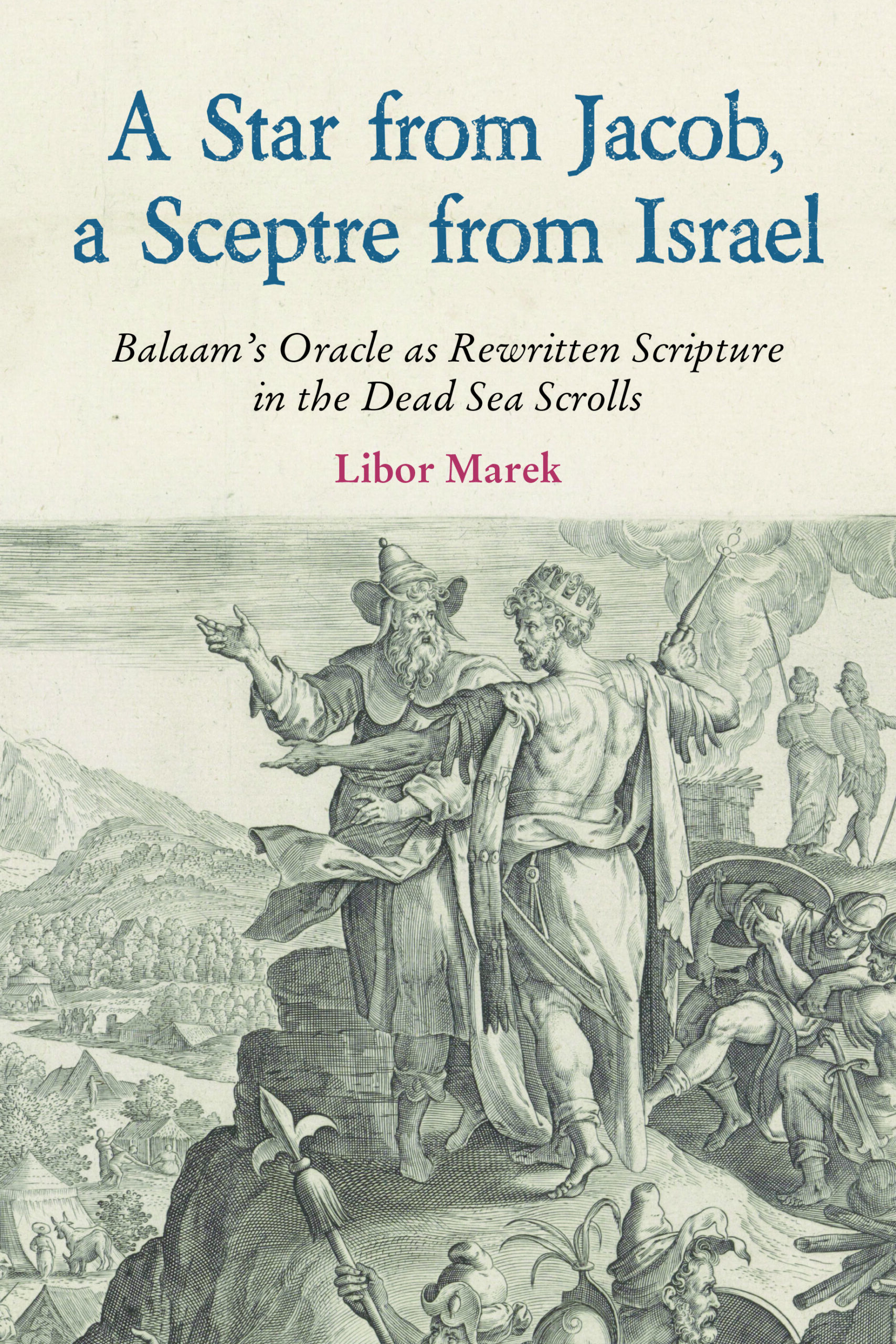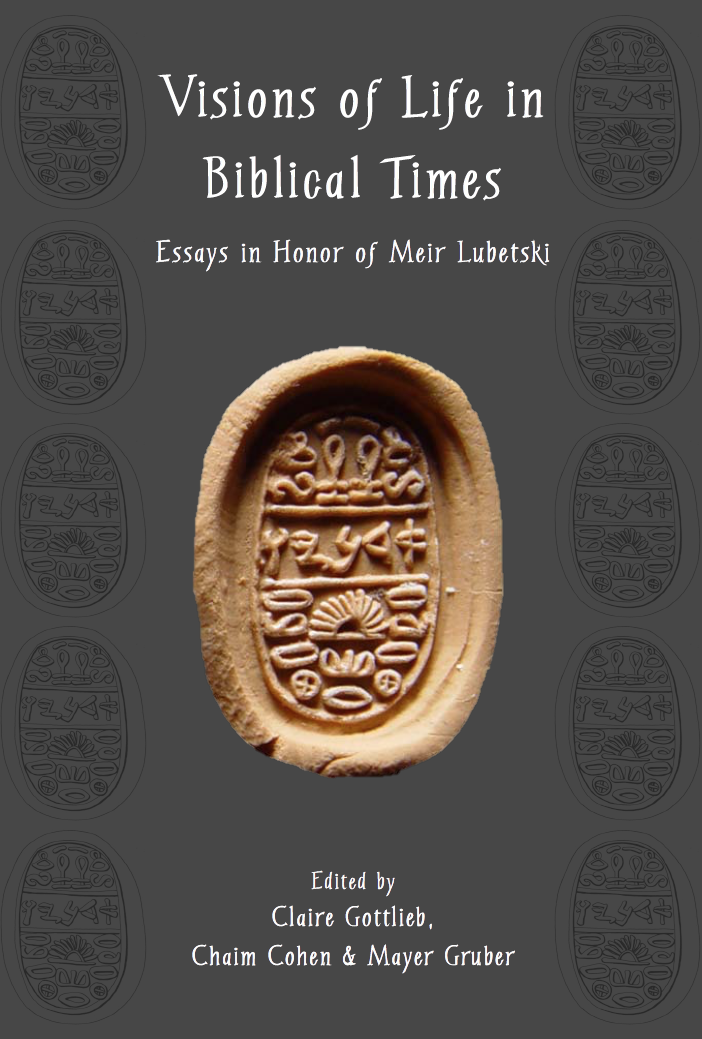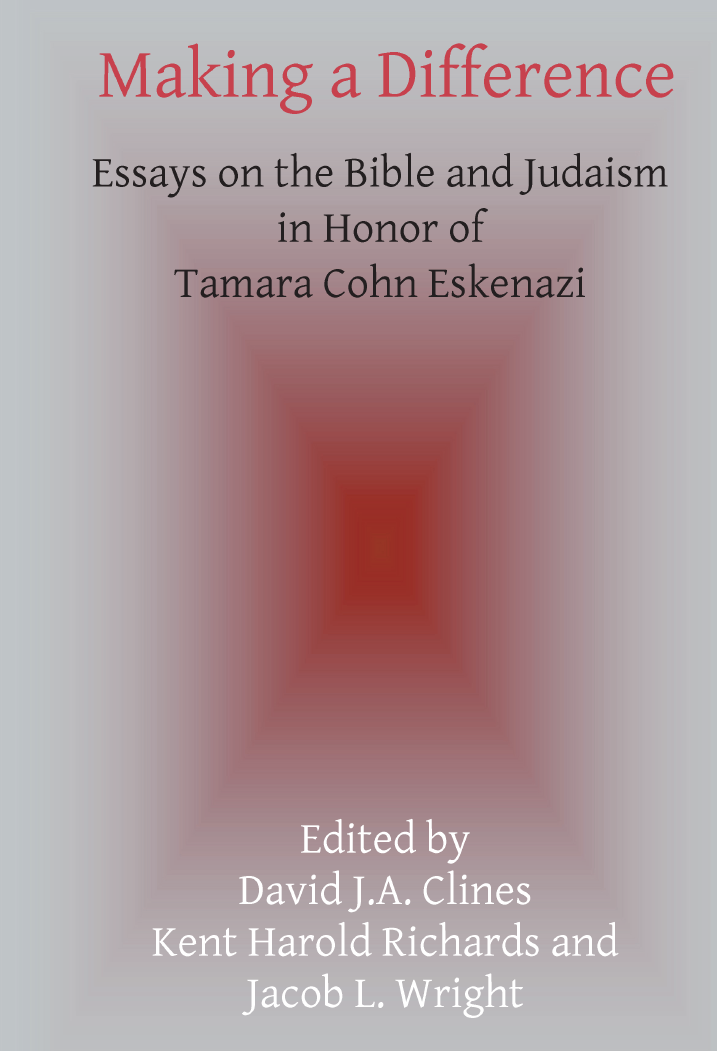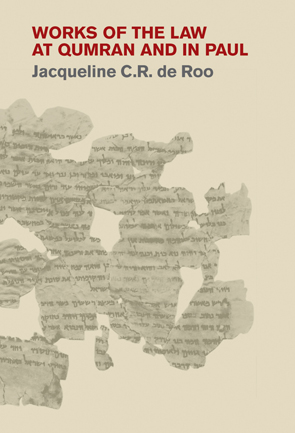From Qumran to Jude: A History of Social Crisis at Qumran and in Early Jewish Christianity
Published: Jun 2023
£65.00
Many have noted the Qumran-like language of Jude. Chris Armitage provides a detailed comparative consideration of the similarities between Jude and the Dead Sea Scrolls peshers in the Hebrew Bible. The writers, in each of these texts, frequently appeal to examples of eschatological punishment for deviant theology and conduct, from the Hebrew Bible.
This study delves systematically into Jude’s use of pesher technique—appropriating a Hebrew Bible example of deviant teaching and behaviour and its eschatological consequences and applying it to the present—and shows, across the divide of Koine Greek and Classical Hebrew, that this is same technique as found in the Dead Sea Scrolls.
Armitage infers that similar socio-theological crises faced Jude’s and the Qumran community, requiring each to generate literature containing purity and pollution rhetoric, derived from remodelling Hebrew Bible predictions of eschatological punishment to fit its own time, in order to ensure internal solidarity.
From Qumran to Jude: A History of Social Crisis at Qumran and in Early Jewish Christianity
£65.00
Many have noted the Qumran-like language of Jude. Chris Armitage provides a detailed comparative consideration of the similarities between Jude and the Dead Sea Scrolls peshers in the Hebrew Bible. The writers, in each of these texts, frequently appeal to examples of eschatological punishment for deviant theology and conduct, from the Hebrew Bible.
This study delves systematically into Jude’s use of pesher technique—appropriating a Hebrew Bible example of deviant teaching and behaviour and its eschatological consequences and applying it to the present—and shows, across the divide of Koine Greek and Classical Hebrew, that this is same technique as found in the Dead Sea Scrolls.
Armitage infers that similar socio-theological crises faced Jude’s and the Qumran community, requiring each to generate literature containing purity and pollution rhetoric, derived from remodelling Hebrew Bible predictions of eschatological punishment to fit its own time, in order to ensure internal solidarity.
A Star from Jacob, a Sceptre from Israel: Balaam’s Oracle as Rewritten Scripture in the Dead Sea Scrolls
Published: Sep 2020
£70.00
The fourth Balaam oracle (Numbers 24.17-19) appears in four separate Dead Sea Scrolls. But how it is used and understood remains puzzling and challenging.
All four scrolls agree that the biblical text is a living artifact and endorse its authority. But they disagree on what it may mean to the audience of their own day. They adjust, rephrase and rework the biblical text according to their own needs and for the benefit of their audience.
Following the twists and turns in this process of interpretation and rewriting has two benefits: first, we become more sensitized to the complexity of the processes by which the scriptural text came into being and to the fact that this process did not have a clear-cut end in mind. Rather, it is thanks to a constant reworking of the scriptural text that it remains alive for its readers. Second, in following closely the process of reinterpretation of this particular text we gain a better understanding of the world of Qumran, of the communication strategy of the Scrolls, and of some of their key theological concepts. In particular, Qumran beliefs about a messiah become more vividly tangible.
A Star from Jacob, a Sceptre from Israel: Balaam’s Oracle as Rewritten Scripture in the Dead Sea Scrolls
£70.00
The fourth Balaam oracle (Numbers 24.17-19) appears in four separate Dead Sea Scrolls. But how it is used and understood remains puzzling and challenging.
All four scrolls agree that the biblical text is a living artifact and endorse its authority. But they disagree on what it may mean to the audience of their own day. They adjust, rephrase and rework the biblical text according to their own needs and for the benefit of their audience.
Following the twists and turns in this process of interpretation and rewriting has two benefits: first, we become more sensitized to the complexity of the processes by which the scriptural text came into being and to the fact that this process did not have a clear-cut end in mind. Rather, it is thanks to a constant reworking of the scriptural text that it remains alive for its readers. Second, in following closely the process of reinterpretation of this particular text we gain a better understanding of the world of Qumran, of the communication strategy of the Scrolls, and of some of their key theological concepts. In particular, Qumran beliefs about a messiah become more vividly tangible.
Visions of Life in Biblical Times: Essays in Honor of Meir Lubetski
Published: Oct 2015
£60.00
This important volume is in honour of the distinguished Semitist and epigrapher Meir Lubetski, of Baruch College, City University of New York. Lubetski has made the chief focus of his research the contribution of the East Mediterranean legacy —languages, literature and archaeological artifacts —to our understanding of the biblical world.
The wide-ranging collection of essays gathered here include, after a personal appreciation of the honoree by his children, papers by Paula Berggren on Shakespeare's Cains, Chaim Cohen on the 'third-man' charioteers, John Day on Noah's ark as made of reeds, Robert Deutsch on six new Hebrew seals, Joseph Fleishman on the law of the defamer (Deut. 22), Moshe Garsiel on the rivalry between Adonijah and Solomon, Claire Gottlieb on Genesis 1 in the twenty-first century, Martin Heide on a new ostracon, Richard Hess on the strange absence of Egyptian names from the book of Joshua, Regine Hunziker-Rodewald on a new Ammonite seal, Isaac Kalimi on the key methods of Targum Chronicles, André Lemaire on the place of Qumran in Jewish history, David Marcus on the Aramaic versions of the burning bush narrative, Robert Stieglitz on divine kingship at Ugarit, Peter van der Veen on a two-headed bronze bull figurine, and Ada Yardeni on legal texts from various locations in the Judean desert.
Visions of Life in Biblical Times: Essays in Honor of Meir Lubetski
£60.00
This important volume is in honour of the distinguished Semitist and epigrapher Meir Lubetski, of Baruch College, City University of New York. Lubetski has made the chief focus of his research the contribution of the East Mediterranean legacy —languages, literature and archaeological artifacts —to our understanding of the biblical world.
The wide-ranging collection of essays gathered here include, after a personal appreciation of the honoree by his children, papers by Paula Berggren on Shakespeare's Cains, Chaim Cohen on the 'third-man' charioteers, John Day on Noah's ark as made of reeds, Robert Deutsch on six new Hebrew seals, Joseph Fleishman on the law of the defamer (Deut. 22), Moshe Garsiel on the rivalry between Adonijah and Solomon, Claire Gottlieb on Genesis 1 in the twenty-first century, Martin Heide on a new ostracon, Richard Hess on the strange absence of Egyptian names from the book of Joshua, Regine Hunziker-Rodewald on a new Ammonite seal, Isaac Kalimi on the key methods of Targum Chronicles, André Lemaire on the place of Qumran in Jewish history, David Marcus on the Aramaic versions of the burning bush narrative, Robert Stieglitz on divine kingship at Ugarit, Peter van der Veen on a two-headed bronze bull figurine, and Ada Yardeni on legal texts from various locations in the Judean desert.
From Judah to Judaea: Socio-Economic Structures and Processes in the Persian Period
Published: May 2013
Price range: £18.50 through £50.00
It has long been recognized that the Persian period is crucial to the history of the formation of the biblical corpora. The essays presented in this volume explore this critically important era, reconstructing the socio-economic shifts that took place as well as the religio-theological environment of the Judean community and its neighbours. The topics of this volume, sociological, archaeological and theological, include: ethnicities and administration in Persian-era Palestine (Yigal); the historical origin of the concept of the piety of the poor at Qumran (Ro); the development of the theological concept of Yhwh's punitive justice (Ro); social, cultural and demographic transformations in Persian-period Judah (Faust); changes in Judah and its neighbouring provinces in the fourth century BCE (Fantalkin and Tal); some Greek views of the Persian empire (Sano). The papers collected in this volume were presented at an international conference held at International Christian University (ICU) in Tokyo, February 17 —19, 2011, a testimony to the fruitfulness of this unusual Asian —Israeli scholarly dialogue.
From Judah to Judaea: Socio-Economic Structures and Processes in the Persian Period
Price range: £18.50 through £50.00
It has long been recognized that the Persian period is crucial to the history of the formation of the biblical corpora. The essays presented in this volume explore this critically important era, reconstructing the socio-economic shifts that took place as well as the religio-theological environment of the Judean community and its neighbours. The topics of this volume, sociological, archaeological and theological, include: ethnicities and administration in Persian-era Palestine (Yigal); the historical origin of the concept of the piety of the poor at Qumran (Ro); the development of the theological concept of Yhwh's punitive justice (Ro); social, cultural and demographic transformations in Persian-period Judah (Faust); changes in Judah and its neighbouring provinces in the fourth century BCE (Fantalkin and Tal); some Greek views of the Persian empire (Sano). The papers collected in this volume were presented at an international conference held at International Christian University (ICU) in Tokyo, February 17 —19, 2011, a testimony to the fruitfulness of this unusual Asian —Israeli scholarly dialogue.
Making a Difference: Essays on the Bible and Judaism in Honor of Tamara Cohn Eskenazi
Published: Oct 2012
£75.00
Tamara Cohn Eskenazi has a special place in contemporary biblical scholarship. Among the first to bring a focus of scholarly attention to the period of ancient Israel's creativity after the Exile, she has also been a leader in foregrounding the Jewish tradition within the interpretative discourse of biblical scholars. And as a woman scholar, she has advanced the study of issues in the Hebrew Bible that impinge on the concerns of women ancient and modern.
Tamara Eskenazi was awarded the 2008 National Jewish Book Award for her volume The Torah: A Women's Commentary and the 2011 National Jewish Book Award in Women's Studies for her commentary on Ruth in the Jewish Publication Society Bible Commentary series.
The 26 articles offered to Tamara Eskenazi by her friends in this volume represent the range of her interests in all things biblical and Jewish. From the Book of Genesis to the New Testament to modern Hebrew fiction, from technical studies on the prophets or Qumran to penetrating insights on her beloved philosopher Levinas, this volume beautifully represents the range and depth of Jewish culture.
Making a Difference: Essays on the Bible and Judaism in Honor of Tamara Cohn Eskenazi
£75.00
Tamara Cohn Eskenazi has a special place in contemporary biblical scholarship. Among the first to bring a focus of scholarly attention to the period of ancient Israel's creativity after the Exile, she has also been a leader in foregrounding the Jewish tradition within the interpretative discourse of biblical scholars. And as a woman scholar, she has advanced the study of issues in the Hebrew Bible that impinge on the concerns of women ancient and modern.
Tamara Eskenazi was awarded the 2008 National Jewish Book Award for her volume The Torah: A Women's Commentary and the 2011 National Jewish Book Award in Women's Studies for her commentary on Ruth in the Jewish Publication Society Bible Commentary series.
The 26 articles offered to Tamara Eskenazi by her friends in this volume represent the range of her interests in all things biblical and Jewish. From the Book of Genesis to the New Testament to modern Hebrew fiction, from technical studies on the prophets or Qumran to penetrating insights on her beloved philosopher Levinas, this volume beautifully represents the range and depth of Jewish culture.
With Wisdom as a Robe: Qumran and Other Jewish Studies in Honour of Ida Fröhlich
Published: Nov 2008
£60.00
Professor Ida Fröhlich, Professor of Hebrew Studies and Ancient Near Eastern History in the Pázmány Péter Catholic University, Budapest, is a celebrated scholar who has been in the forefront of the remarkable development of Hebrew and Jewish studies in recent decades in Hungary. Among her important publications are 'Time and times and half a time': Historical Consciousness in the Jewish Literature of the Persian and Hellenistic Eras (1996), and, more recently, the first translation of the corpus of the Dead Sea Scrolls into Hungarian. Her current major project is, in collaboration with a group of younger scholars, to prepare a Hungarian translation of all the apocryphal and pseudepigraphical materials.
In this very substantial volume, presented to her on the occasion of her sixtieth birthday, the essays of 38 international scholars are arranged in three sections: (1) Hebrew Bible / Old Testament, (2) Apocrypha —Pseudepigrapha and Qumran, and (3) Jewish Studies / Christian Interpretation.
With Wisdom as a Robe: Qumran and Other Jewish Studies in Honour of Ida Fröhlich
£60.00
Professor Ida Fröhlich, Professor of Hebrew Studies and Ancient Near Eastern History in the Pázmány Péter Catholic University, Budapest, is a celebrated scholar who has been in the forefront of the remarkable development of Hebrew and Jewish studies in recent decades in Hungary. Among her important publications are 'Time and times and half a time': Historical Consciousness in the Jewish Literature of the Persian and Hellenistic Eras (1996), and, more recently, the first translation of the corpus of the Dead Sea Scrolls into Hungarian. Her current major project is, in collaboration with a group of younger scholars, to prepare a Hungarian translation of all the apocryphal and pseudepigraphical materials.
In this very substantial volume, presented to her on the occasion of her sixtieth birthday, the essays of 38 international scholars are arranged in three sections: (1) Hebrew Bible / Old Testament, (2) Apocrypha —Pseudepigrapha and Qumran, and (3) Jewish Studies / Christian Interpretation.
The Gate of Heaven: The History and Symbolism of the Temple in Jerusalem
Published: Mar 2008
£20.00
In this book, first published in 1991, the prolific and innovative British biblical scholar Margaret Barker sets out to explore the origins and the afterlife of traditions about the Temple in Judaism. Using evidence from the deutero-canonical and pseudepigraphic texts, Qumran and rabbinic material, as well as early Christian texts and liturgies, she advances a host of radical and suggestive theories, including the following:
1. Apocalyptic writing was the temple tradition.
2. Temple buildings were aligned to establish a solar calendar, thus explaining the astronomical texts incorporated in 1 Enoch
3. The temple symbolism of priest and sanctuary antedated the Eden stories of Genesis.
4. The temple buildings depicted heaven and earth separated by a veil of created matter.
5. The throne visions, the basis of the later Merkavah mysticism, originated as high priestly sanctuary experiences, first attested in Isaiah but originating in the royal cult when king figures passed beyond the temple veil from earth into heaven, from immortality to the resurrected state, and then returned.
6. The Day of the Lord or the Day of Judgment was the myth of the Day of Atonement and atonement was the rite of healing and recreation rather than propitiation
7. A characteristic concept of time and eternity was crucial to understanding this material as the area beyond the temple veil was beyond time.
8. Much temple symbolism survived in Gnostic texts, suggesting that the bitterness apparent in many of them derived from the upheavals and exclusions which followed the establishment of the second temple.
The Gate of Heaven: The History and Symbolism of the Temple in Jerusalem
£20.00
In this book, first published in 1991, the prolific and innovative British biblical scholar Margaret Barker sets out to explore the origins and the afterlife of traditions about the Temple in Judaism. Using evidence from the deutero-canonical and pseudepigraphic texts, Qumran and rabbinic material, as well as early Christian texts and liturgies, she advances a host of radical and suggestive theories, including the following:
1. Apocalyptic writing was the temple tradition.
2. Temple buildings were aligned to establish a solar calendar, thus explaining the astronomical texts incorporated in 1 Enoch
3. The temple symbolism of priest and sanctuary antedated the Eden stories of Genesis.
4. The temple buildings depicted heaven and earth separated by a veil of created matter.
5. The throne visions, the basis of the later Merkavah mysticism, originated as high priestly sanctuary experiences, first attested in Isaiah but originating in the royal cult when king figures passed beyond the temple veil from earth into heaven, from immortality to the resurrected state, and then returned.
6. The Day of the Lord or the Day of Judgment was the myth of the Day of Atonement and atonement was the rite of healing and recreation rather than propitiation
7. A characteristic concept of time and eternity was crucial to understanding this material as the area beyond the temple veil was beyond time.
8. Much temple symbolism survived in Gnostic texts, suggesting that the bitterness apparent in many of them derived from the upheavals and exclusions which followed the establishment of the second temple.
Works of the Law at Qumran and in Paul
Published: Mar 2007
£60.00
The phrase 'works of the law' occurs only in the Dead Sea Scrolls and in Paul, but it has a different connotation in each corpus.
At Qumran, the 'works of the law' are deeds of obedience to God's law, and are ultimately inspired by God. They function as a means of atonement, whether for the individual who performs them or for the sins of others.
For Paul, on the other hand, the 'works of the law' are quintessentially the works of Abraham. Though they are indeed good deeds, Abraham himself was a sinful man, and so his deeds could not make atonement for himself or for others. In fact, Paul is reacting against the idea of Abraham as a redeemer figure that was held by some of his contemporaries.
The phrase 'works of the law' thus takes on a negative coloration in Paul, as a deceptively false means of salvation. In contrast to Qumran, Paul's position is that justification must be effected 'apart from works of the law', and thus by Jesus Christ. Abraham is no 'second Adam', as some were thinking, and his good deeds, epitomized in his sacrifice of Isaac, had no atoning value.
This closely reasoned study makes an important contribution to the study of New Testament theology; it undertakes to settle some long-standing debates about Paul's soteriology by proposing an alternative both to traditional interpretation of Paul and to the 'New Perspective on Paul'.
Works of the Law at Qumran and in Paul
£60.00
The phrase 'works of the law' occurs only in the Dead Sea Scrolls and in Paul, but it has a different connotation in each corpus.
At Qumran, the 'works of the law' are deeds of obedience to God's law, and are ultimately inspired by God. They function as a means of atonement, whether for the individual who performs them or for the sins of others.
For Paul, on the other hand, the 'works of the law' are quintessentially the works of Abraham. Though they are indeed good deeds, Abraham himself was a sinful man, and so his deeds could not make atonement for himself or for others. In fact, Paul is reacting against the idea of Abraham as a redeemer figure that was held by some of his contemporaries.
The phrase 'works of the law' thus takes on a negative coloration in Paul, as a deceptively false means of salvation. In contrast to Qumran, Paul's position is that justification must be effected 'apart from works of the law', and thus by Jesus Christ. Abraham is no 'second Adam', as some were thinking, and his good deeds, epitomized in his sacrifice of Isaac, had no atoning value.
This closely reasoned study makes an important contribution to the study of New Testament theology; it undertakes to settle some long-standing debates about Paul's soteriology by proposing an alternative both to traditional interpretation of Paul and to the 'New Perspective on Paul'.








